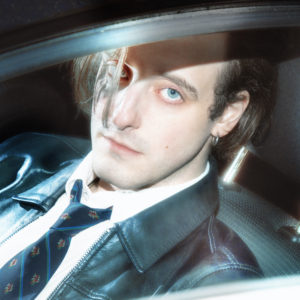
“Certain words needs certain sounds.” A snippet from an old interview included in the video for the making of The Big Dream catches that David Lynch sound bite. Film and music have never been mutually exclusive for the director, which if nothing else, could be gathered from watching any one his films. Sound has always played an essential part of Lynch’s visual storytelling. The Big Dream is essentially a role reversal where his moody lyrics and blues-driven electronica reveal cinematic elements that are distinctively ‘Lynchian.’
The sophomore album comes from a man best known for capacity to visualize and tell stories in the loopiest fashion through whatever medium he chooses, whether he’s selling coffee with Barbie’s help or filming close-ups of dismembered ears via Blue Velvet. Lynch’s breadth of work has never been short on creativity and strangeness. Not unlike his movies, Lynch’s thin, nasally voice coming through on the album catches you off guard initially. The combination of croaky warbling and hypnotic, vibrating bass invokes the unsettling vibe that Lynch fans can’t help but love.
Songs like the title track and “Wishin’ Well” sound like the offspring of 90’s trip-hop and Thievery Corporation in the 00’s. Several tracks seem almost like a transport back in time, recalling Massive Attack’s classic debut, Blue Lines. Just as Karen O made an appearance on Crazy Clown Time, Lynch brings on one of today’s finest singer/songwriters, Lykke Li, also known for exhibiting an offbeat persona. She is featured in the closing track, “I’m Waiting Here,” which is smart since it leaves the listener wondering why she didn’t come on sooner. With Lynch’s voice veering on the cartoonish in “Sun Can’t Be Seen No More,” the level of suggested discomfort in listening to The Big Dream is not far from the sentiment felt after viewing one his films. That is to say, David Lynch probably has a fairly accurate sense of how he’s making you feel.
If “The Big Dream” was represented by a certain point in the day, it would fall under the meeting point between consciousness and sleep. The dream part would be too obvious and is individual to the listener. A half-dream state is collectively felt, and anyone choosing to listen to a David Lynch album would probably agree.
Review by Sandy Chung. Follow her on Twitter at @sndychng









